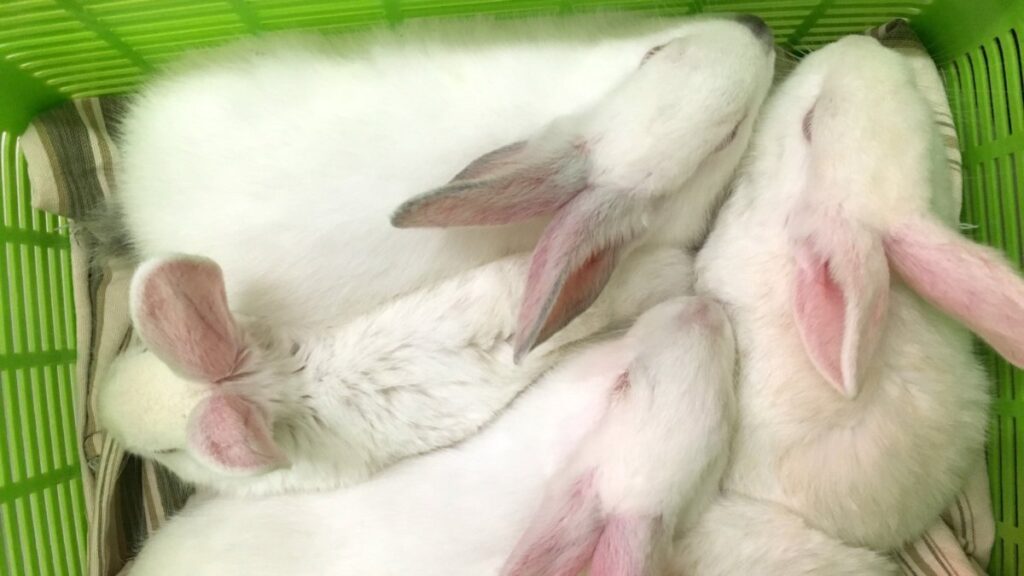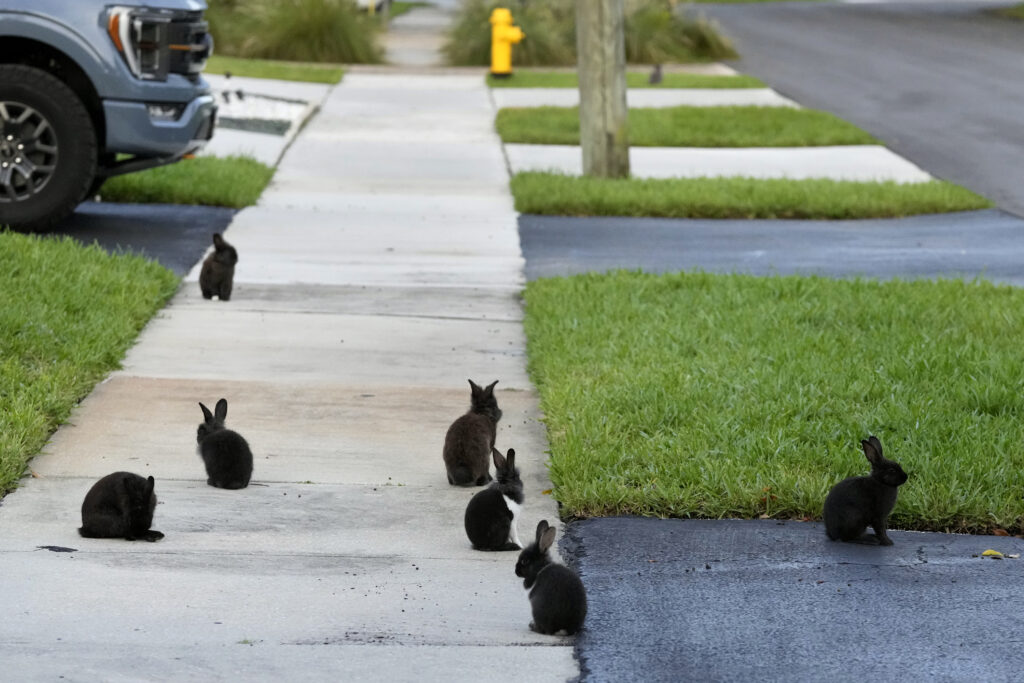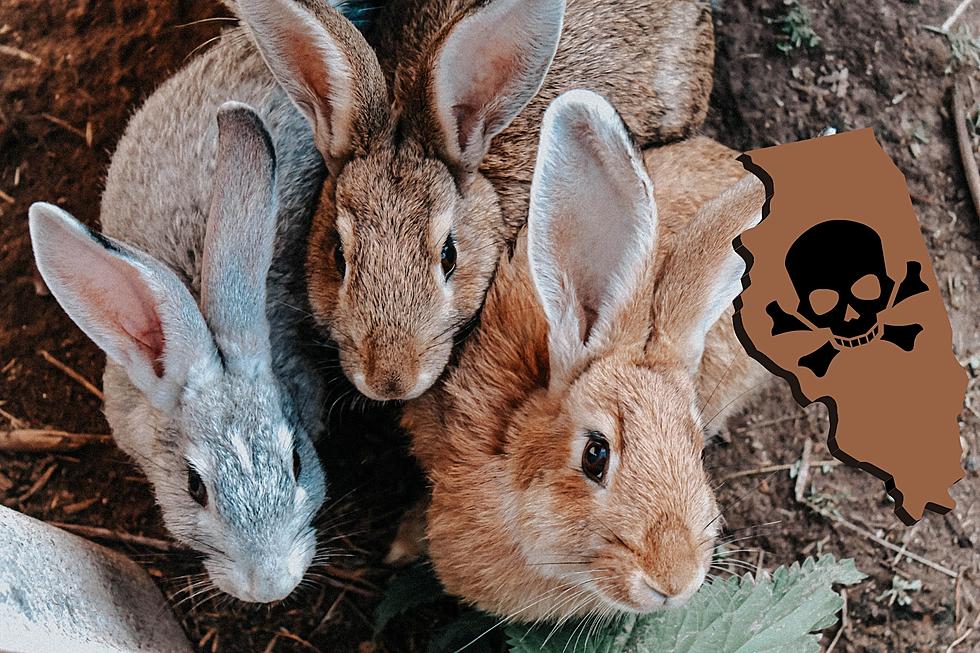The highly contagious virus known as Rabbit Hemorrhagic Disease Virus 2 (RHDV2) has made its way to Chicago, causing concern among pet rabbit owners and wildlife enthusiasts. This disease, which can rapidly kill rabbits, was identified in the city for the first time last month. While rabbits infected with RHDV2 often die quickly without showing symptoms, they may also exhibit bleeding from the eyes or mouth. The virus can be spread by both pet and wild rabbits, and it is crucial for pet owners to get their rabbits vaccinated as soon as possible to protect them. Additionally, individuals are encouraged to report any suspicious deaths of wild rabbits to the authorities. Although the disease cannot spread to humans or other pets, it can have a significant impact on rabbit populations and the ecosystem as a whole. With precautions such as disinfecting shoes and staying vigilant for potential cases, efforts are being made to mitigate the spread of RHDV2 and protect rabbits in the Chicago area.
Rabbit Hemorrhagic Disease Virus 2 Identified in Chicago

Overview of RHDV2
Rabbit Hemorrhagic Disease Virus 2 (RHDV2) is a highly contagious and fatal disease that affects both pet and wild rabbits. It is characterized by sudden death in infected rabbits, with some displaying symptoms such as bleeding from the eyes or mouth. However, many infected rabbits do not show any signs of illness. It is important to note that RHDV2 poses no threat to humans or other pets.
Symptoms and Transmission of RHDV2
Symptoms of RHDV2 in rabbits include lethargy, difficulty breathing, and loss of appetite. The virus is transmitted through contact with diseased particles, either from direct contact with infected rabbits or through environmental contamination. However, it is not transmissible to humans or other pets.

Spread of RHDV2 to Chicago
RHDV2 was first identified in the state of Illinois on July 13. The virus made its way to Chicago, specifically in the Lakeview area, where two unvaccinated rabbits died suddenly at the Cuddle Bunny boarding facility. A third rabbit from the same facility was also confirmed to have died from RHDV2. The source of infection is currently under investigation.
Cases in Chicago
The deaths of the unvaccinated rabbits at the Cuddle Bunny facility in Lakeview raised concerns about the spread of RHDV2 in Chicago. As a result, the facility has temporarily closed its doors to ensure the safety of the remaining rabbits and to administer RHDV2 vaccines. The closure has sparked a period of mourning for the facility’s staff and a determination to reopen once the situation is under control.
Closure of Cuddle Bunny
Cuddle Bunny, the boarding business where the cases of RHDV2 were identified, has temporarily closed its operations. This closure allows the facility to address the loss of their furry family members and assess the steps needed to prevent future outbreaks. The closure highlights the importance of vaccination in preventing the spread of RHDV2.
Vaccination Process for Pet Rabbits
Vaccination is crucial in protecting pet rabbits from RHDV2. The vaccination process involves two initial shots given three weeks apart, followed by a yearly booster shot. After the second shot, rabbits are protected from catching RHDV2 for a year. It is essential to adhere to the recommended vaccination schedule to ensure optimal protection for pet rabbits. Boarding programs, such as Cuddle Bunny, may have specific vaccination requirements for the rabbits they accommodate.

Reporting Suspicious Deaths of Wild Rabbits
It is important to report any suspicious deaths of wild rabbits to the authorities. If you come across a wild rabbit that has died without an apparent reason, it is advised not to touch it and instead contact the Illinois Department of Agriculture or the U.S. Department of Agriculture Veterinary Services. Reporting these cases allows for surveillance and monitoring of the spread of RHDV2.
Preventing the Spread of RHDV2
To prevent the spread of RHDV2, it is crucial to practice proper disinfection protocols. Disinfecting shoes and feet after being outdoors can help reduce the risk of tracking disease particles into homes. Recommended disinfecting agents include Rescue disinfectant spray or a mixture of water and bleach. These measures are essential in preventing the further spread of the virus.

Effects on Red Door Animal Shelter
Red Door Animal Shelter, located at 2410 W. Lunt Ave, has experienced significant challenges due to the presence of RHDV2. The virus has caused a “bottleneck” in the shelter’s rehabilitation process for rescued rabbits, as they must undergo a quarantine period of at least five weeks to receive their RHDV2 vaccines. The shelter’s boarding program, Hare BnB, now only accepts fully vaccinated rabbits to ensure the safety of the animals in their care.
RHDV2 in the United States
RHDV2 was first identified in the United States in 2018 and has since been found in rabbits in at least 28 states. The disease has proven to have a substantial impact on rabbit populations due to its rapid lethality. It is important to recognize the role that rabbits play in nature, as they serve as a vital food source for many animals in the ecosystem.
In conclusion, the identification of RHDV2 in Chicago highlights the need for proactive measures to prevent its further spread. Vaccination of pet rabbits, reporting suspicious deaths of wild rabbits, and practicing proper disinfection protocols are all critical steps in controlling the virus. The closure of Cuddle Bunny and the challenges faced by Red Door Animal Shelter underscore the impact of RHDV2 on both businesses and the welfare of rabbits. Continued efforts across the United States should be made to minimize the effects of RHDV2 on rabbit populations and preserve the important ecological role that rabbits play.

